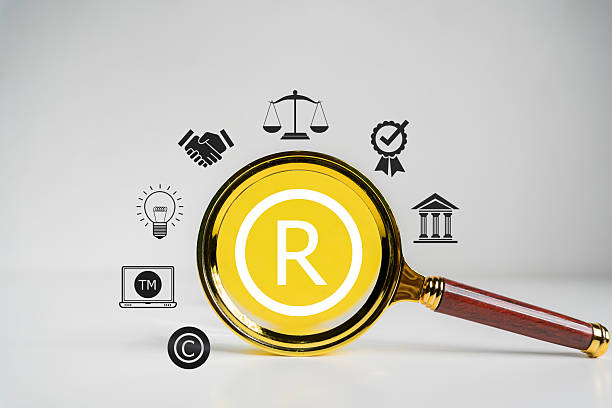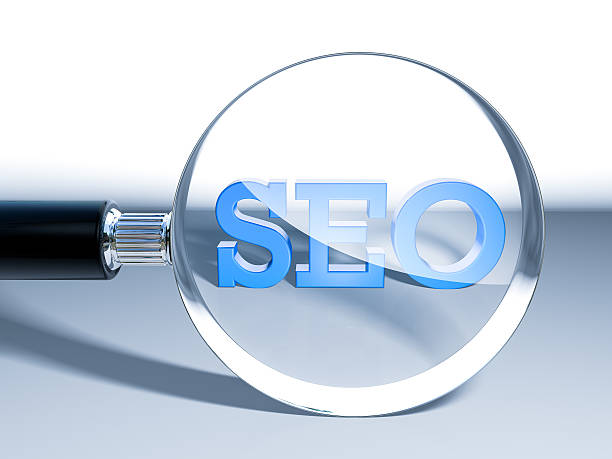What is Technical SEO and Why Does It Matter?
What is Technical SEO and Why Does It Matter?
#Technical SEO refers to optimizing the technical aspects of a website so that search engines like Google can easily crawl and index it.
Technical SEO is the foundation of a successful SEO strategy; because if search engines can’t properly understand your website, your great content will never be seen.
In other words, technical SEO ensures that your website is accessible and understandable for search engines.
This includes things like website speed, URL structure, XML sitemap, mobile-friendliness, use of HTTPS, and more.
In fact, SEO technical helps you improve your website’s ranking in search results and attract more organic traffic.
Without proper technical SEO, your efforts to produce quality content and build backlinks may not achieve the desired results.
The importance of technical SEO is that it helps search engines identify and evaluate your website content more effectively.
This leads to better website ranking in search results and ultimately, increased visitors and customers.
In short, technical SEO is the infrastructure needed for success in the SEO world and should not be ignored.
By investing in technical SEO, you can ensure that your website is technically optimized and ready to compete in the online market.
Are you losing potential customers due to an unprofessional website? Rasaweb is your answer! With our specialized corporate website design services:
✅ Enhance the credibility and position of your business
✅ Experience attracting more targeted customers
⚡ Get a free consultation now!
Checking and Improving Website Speed
Checking and Improving Website Speed
Website speed is a critical factor in SEO and user experience.
Slow websites tire visitors and increase the bounce rate.
Google also considers website speed as an important ranking factor.
To check your website speed, you can use tools like Google’s PageSpeed Insights or GTmetrix.
These tools will show you which parts of your website need improvement.
To improve website speed, you can take the following actions:
- Optimize images: Large images are one of the main causes of website slowness.
Use optimized image formats like WebP and reduce image size. - Enable Gzip compression: Gzip compression can reduce the size of your website files and improve loading speed.
- Use a CDN: A Content Delivery Network (CDN) helps you store your website content on different servers around the world and deliver it to users from the nearest server.
- Optimize code: Optimize your website’s HTML, CSS, and JavaScript code and remove extra and unnecessary code.
- Use Cache: By using cache, you can store a copy of your website in users’ browsers and prevent it from being reloaded on subsequent visits.
Optimizing URL Structure
Optimizing URL Structure
Your website’s URL structure plays an important role in SEO and user experience.
Clear and descriptive URLs help search engines better understand the content of the page and also show users what page they will be taken to by clicking on the link.
The best practice is to keep your website URLs short, descriptive, and contain relevant keywords.
Important points in optimizing URL structure:
- Use relevant keywords: Your URLs should include keywords that are related to the content of the page.
- Keep URLs short: Short URLs are easier to read and remember.
- Use hyphens (-) instead of spaces ( ): Search engines consider hyphens as word separators in URLs.
- Use lowercase letters: Using lowercase letters in URLs reduces the chance of errors.
- Avoid using special characters: Special characters may cause problems when crawling and indexing your website.
Example of an optimized URL:
https://example.com/seo-technical-guide
In contrast, an inappropriate URL:
https://example.com/page?id=123&category=4
Below is a table for comparing optimized and non-optimized URLs:
| Feature | Optimized URL | Non-Optimized URL |
|---|---|---|
| Clarity | Clear and descriptive | Unclear and vague |
| Length | Short | Long |
| Keywords | Includes keywords | Lacks keywords |
| Readability | Readable and understandable | Unreadable and difficult |
In general, optimizing the URL structure is an important step in SEO that can help improve your website’s ranking in search results and increase organic traffic.
XML Sitemap and robots.txt
XML Sitemap and robots.txt
An XML sitemap is a file that contains a list of all the important URLs on your website.
This file helps search engines crawl your website completely and index all of its pages.
robots.txt is a text file that tells search engines which parts of your website should not be crawled.
This file can be used to prevent crawling duplicate pages, unnecessary pages, and personal pages.
Click here to preview your posts with PRO themes ››
XML Sitemap:
- Helps search engines crawl your website completely.
- Helps search engines identify new and updated content faster.
- Very useful for large websites with complex structures.
robots.txt:
- Prevents crawling duplicate and unnecessary pages.
- Conserves server bandwidth.
- Prevents personal and sensitive pages from appearing in search results.
How to create and submit an XML sitemap:
- Create your XML sitemap using online tools like XML-Sitemaps.com.
- Upload the sitemap file to the root directory of your website.
- Register your sitemap in Google Search Console.
How to create a robots.txt file:
- Create a text file named robots.txt.
- Enter your desired rules in the robots.txt file.
- Upload the robots.txt file to the root directory of your website.
For example, to prevent crawling all pages of the website, you can use the following code in the robots.txt file:
User-agent: *
Disallow: /
Using an XML sitemap and robots.txt file are two important steps in optimizing your website’s technical SEO that can help improve your website’s ranking in search results.
Is your online sales not what you expected? With Rasaweb, solve the problem of low sales and poor user experience forever!
✅ Increase visitor-to-customer conversion rate
✅ Create an enjoyable user experience and increase customer trust
⚡ Get a free consultation now!
Mobile-Friendly Optimization
Mobile-Friendly Optimization
Given the increasing use of mobile phones, optimizing your website for mobile-friendliness is very important.
Google uses a Mobile-First Indexing approach, meaning that the mobile version of your website is considered the primary version for indexing and ranking.
If your website is not optimized for mobile, you may lose your ranking in search results.
Important points in optimizing mobile-friendliness:
- Use Responsive Design: Responsive design allows your website to automatically adapt to the screen size of different devices (mobile phones, tablets, desktop computers).
- Optimize website speed: Website speed is more important on mobile because mobile users typically use slower internet.
- Use readable fonts: Your website fonts should be readable and understandable on mobile screens.
- Optimize buttons and links: Your website buttons and links should be large enough for mobile users to easily touch them.
- Avoid using Flash content: Flash is not supported on most mobile devices.
To check the mobile-friendliness of your website, you can use Google’s Mobile-Friendly Test tool.
This tool shows you how your website is displayed on mobile and what problems it has.
By optimizing your website for mobile-friendliness, you can provide a better user experience for mobile users and improve your website’s ranking in search results.
Mobile SEO is a vital aspect of SEO in today’s world that should not be ignored.
The Importance of HTTPS and Website Security
The Importance of HTTPS and Website Security
HTTPS is a security protocol that encrypts the communication between the user’s browser and your website’s server.
Using HTTPS protects your users’ information from theft and unauthorized access.
Google considers the use of HTTPS as a ranking factor and gives a better ranking to websites that use HTTPS.
In addition, web browsers typically mark websites that do not use HTTPS as insecure, which can reduce user trust.
To enable HTTPS, you need to obtain an SSL/TLS certificate for your website and install it on your server.
Many web hosting companies offer free or paid SSL/TLS certificates.
In addition to using HTTPS, you should also take other measures to secure your website, including:
- Use strong passwords: Use strong and unique passwords for all your user accounts.
- Update software: Regularly update all your website software (such as content management system, plugins, and themes) to prevent security vulnerabilities.
- Use a firewall: A firewall can protect your website from malicious attacks.
- Regular backups: Regularly back up your website so you can recover it if a problem occurs.
Website security is a very important issue that should not be ignored.
By securing your website, you can protect your users’ information, gain their trust, and improve your website’s ranking in search results.
SEO and security are two sides of the same coin and should be considered simultaneously.
Successful SEO requires a secure and trustworthy website.
Optimizing Duplicate Content
Optimizing Duplicate Content
Duplicate content refers to content that exists on multiple pages of your website or on other websites.
Duplicate content can confuse search engines and reduce your website’s ranking in search results.
Google may penalize websites that have duplicate content.
To prevent the problem of duplicate content, you can take the following actions:
- Use the canonical tag: The canonical tag tells search engines which version of a page is the main version.
- 301 redirect: If you have two pages with similar content, you can redirect one to the other.
- Avoid creating duplicate content: Try to produce unique and original content.
- Use URL parameters correctly: If you use URL parameters to filter or sort content, make sure that these parameters do not create duplicate content.
Click here to preview your posts with PRO themes ››
For example, if you have two pages with the following URLs:
https://example.com/product
https://example.com/product?color=red
You can use the canonical tag on the second page and tell search engines that the first page is the main version:
<link rel="canonical" href="https://example.com/product" />
Identifying and fixing duplicate content issues is an important step in optimizing your website’s technical SEO that can help improve your website’s ranking in search results.
SEO helps you get a good ranking in search results.
| Method | Description | Advantages | Disadvantages |
|---|---|---|---|
| Canonical Tag | Specifying the main version of the page | Simple and effective | Requires HTML editing |
| 301 Redirect | Permanent transfer from one page to another | Complete removal of duplicate page | Potential loss of backlinks |
| Avoiding duplicate content production | Producing unique content | Best solution | Time-consuming and expensive |
Optimizing Structured Data
Optimizing Structured Data
Structured data refers to codes that help search engines better understand your website’s content.
Using structured data, you can provide search engines with information about products, events, recipes, articles, and other types of content.
Google uses structured data to display rich results in search results.
Rich results are results that, in addition to the title, description, and URL, also display additional information such as rating, price, image, etc.
Rich results attract more user attention and increase click-through rate (CTR).
To add structured data to your website, you can use Schema.org standards.
Schema.org is a collection of standard vocabularies used to describe different types of content.
Different types of structured data:
- Product: For describing products
- Event: For describing events
- Recipe: For describing recipes
- Article: For describing articles
- Review: For describing reviews
- Organization: For describing organizations
- LocalBusiness: For describing local businesses
To test your website’s structured data, you can use Google’s Rich Results Test tool.
This tool shows you whether your structured data has been implemented correctly or not.
Optimizing structured data is an important step in optimizing your website’s technical SEO that can help improve your website’s ranking in search results and increase organic traffic.
SEO helps you have a better website.
Falling behind in competition with large online stores?
Rasaweb will bring your business online and increase your market share with professional e-commerce website design!
✅ Increase brand credibility and customer trust
✅ Easy shopping experience leads to more sales
⚡ Take action now to receive a free website design consultation!
Checking and Fixing Crawl Errors
Checking and Fixing Crawl Errors
Crawl errors refer to problems that prevent search engines from crawling your website.
These errors can be caused by various factors such as 404 pages, broken redirects, server errors, etc.
If search engines cannot crawl your website properly, they may not be able to index all of its pages and your website’s ranking in search results may decrease.
To check your website’s crawl errors, you can use Google Search Console.
In Search Console, you can view the crawl errors report and review information about each error.
Common types of crawl errors:
- 404 Not Found: The requested page was not found.
- Redirect Error: Problem in redirect
- Server Error: Server error
- Blocked by robots.txt: Page is blocked by robots.txt file.
To fix crawl errors, you need to identify the cause of each error and take the necessary steps to fix it.
For example, if you have a 404 page, you can redirect it to a related page or create a replacement page.
If you have an error in redirect, you should fix the redirect.
Checking and fixing crawl errors is an important step in optimizing your website’s technical SEO that can help improve your website’s ranking in search results.
A skilled SEO always pays attention to crawl errors.
Monitoring and Continuous Improvement of Technical SEO
Monitoring and Continuous Improvement of Technical SEO
Technical SEO is an ongoing process and requires monitoring and improvement.
Over time, your website may experience technical problems that need to be fixed.
In addition, search engine algorithms are constantly changing and you need to adapt your SEO strategy to these changes.
Click here to preview your posts with PRO themes ››
To monitor your website’s technical SEO, you can use various tools such as Google Search Console, Google Analytics, Screaming Frog, etc.
These tools help you track your website’s performance in various areas such as speed, mobile-friendliness, crawl errors, etc.
Tips for continuous improvement of technical SEO:
- Regularly check your website for crawl errors and fix them.
- Regularly check your website speed and optimize it.
- Make sure your website is optimized for mobile.
- Regularly check your website’s structured data and update it.
- Stay up-to-date with the latest changes to search engine algorithms and adapt your SEO strategy to them.
By monitoring and continuously improving your website’s technical SEO, you can ensure that your website is always technically optimized and has a good ranking in search results.
SEO is a dynamic science and is constantly changing.
Frequently Asked Questions
| Question | Answer |
|---|---|
| What is SEO? | SEO, or Search Engine Optimization, is a process to increase the quality and quantity of website traffic by improving the site’s ranking in the natural (organic) results of search engines like Google. |
| What are the main types of SEO? | SEO is divided into three main categories: On-Page SEO, Off-Page SEO, and Technical SEO. |
| What does On-Page SEO include? | On-Page SEO includes optimizing elements within the website, such as keywords, page title (Title Tag), meta descriptions (Meta Description), content, URL structure, images, and internal links. |
| What is Off-Page SEO? | Off-Page SEO refers to activities outside of the website that help improve its ranking, such as backlink building, social media marketing, and brand mentions. |
| What is Technical SEO? | Technical SEO involves optimizing the technical aspects of a website to help search engines crawl and index it better. This includes site speed, mobile-friendliness, site structure, sitemaps, and Robots.txt file. |
| What role do Keywords play in SEO? | Keywords are phrases that users enter in search engines. Using relevant keywords correctly and purposefully in content and site elements helps search engines understand the topic of your page and display it in related searches. |
| What is a Backlink and why is it important? | A backlink, or inbound link, is a link from one website to another. Backlinks act as a “vote of confidence” from other sites for search engines and play an important role in the credibility and ranking of the site, especially if they are from reputable sites. |
| What is the impact of quality content on SEO? | High-quality, relevant, comprehensive, and unique content not only attracts and retains users, but also shows search engines that your page is valuable. This helps improve ranking, reduce bounce rate, and increase user time on site. |
| Why is site loading speed important for SEO? | Site loading speed is an important ranking factor for Google. Faster sites provide a better user experience, have lower bounce rates, and are preferred by search engines. |
| Is SEO a one-time process? | No, SEO is an ongoing and long-term process. Search engine algorithms are constantly changing, competition is increasing, and site content also needs updating. Therefore, SEO requires continuous monitoring, analysis, and optimization. |
And other services of Rasa Web Advertising Agency in the field of advertising
Intelligent Linking: A creative platform for improving customer acquisition by optimizing key pages.
Intelligent Content Strategy: A fast and efficient solution for digital branding with a focus on intelligent data analysis.
Intelligent SEO: A creative platform for improving online growth with intelligent data analysis.
Intelligent Custom Software: Transform your site’s traffic with the help of intelligent data analysis.
Intelligent Conversion Rate Optimization: A creative platform for improving click-through rates with a SEO-driven content strategy.
And more than a hundred other services in the field of internet advertising, advertising consulting, and organizational solutions
Internet Advertising | Advertising Strategy | Advertorials
Resources
The Comprehensive Guide to Technical SEO from Search Engine Journal
,Technical SEO Training from Moz
,Technical SEO: The Complete Guide from Ahrefs
,Technical SEO Checklist from Semrush
? Is your business ready to leap into the digital world? Rasaweb Digital Marketing Agency paves the way for your success by providing comprehensive and innovative solutions. From professional website design and SEO optimization to managing targeted advertising campaigns, we are with you every step of the way in your business growth.
📍 Tehran, Mirdamad Street, next to Central Bank, Southern Kazeroun Alley, Ramin Alley No. 6













